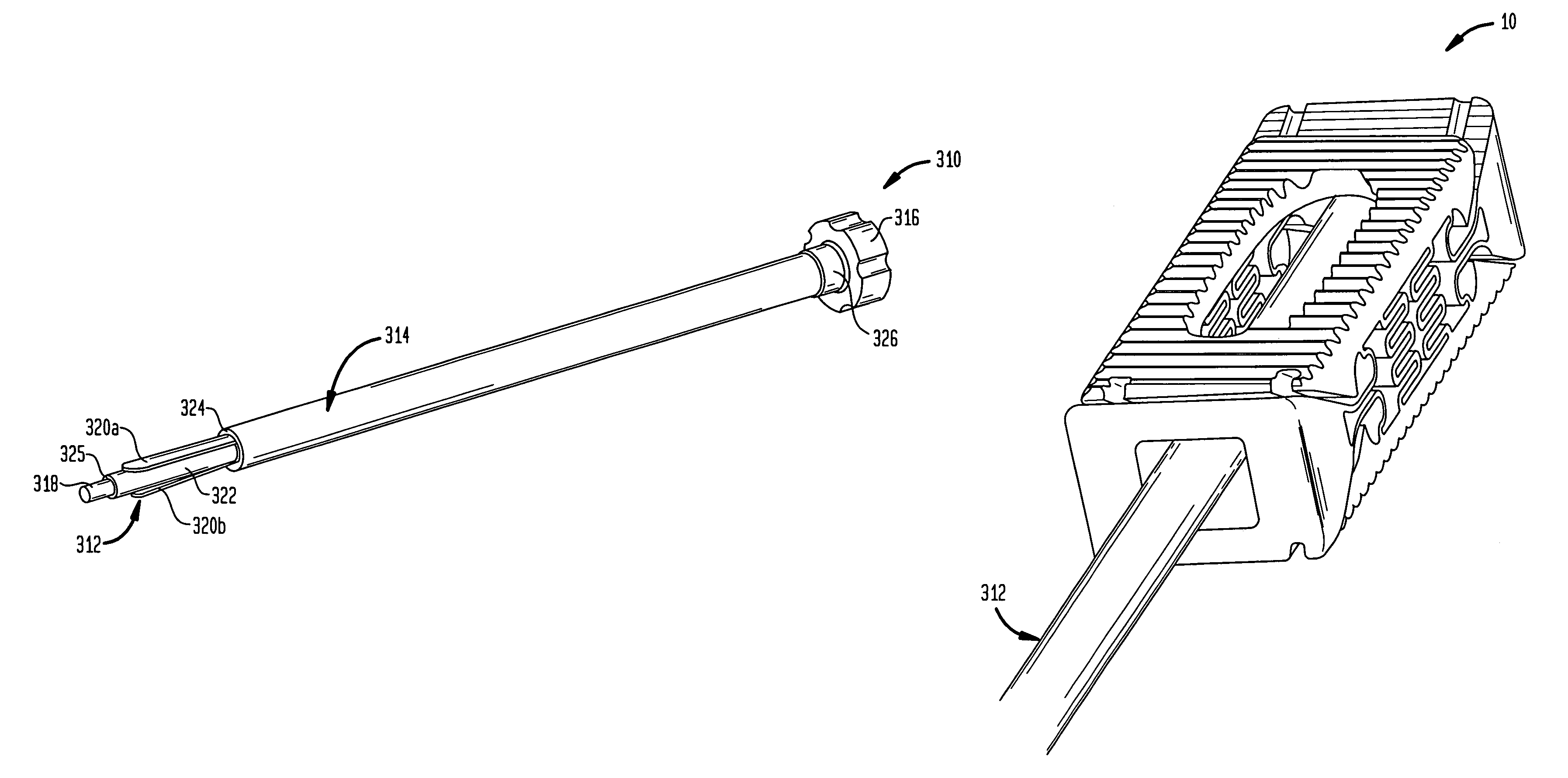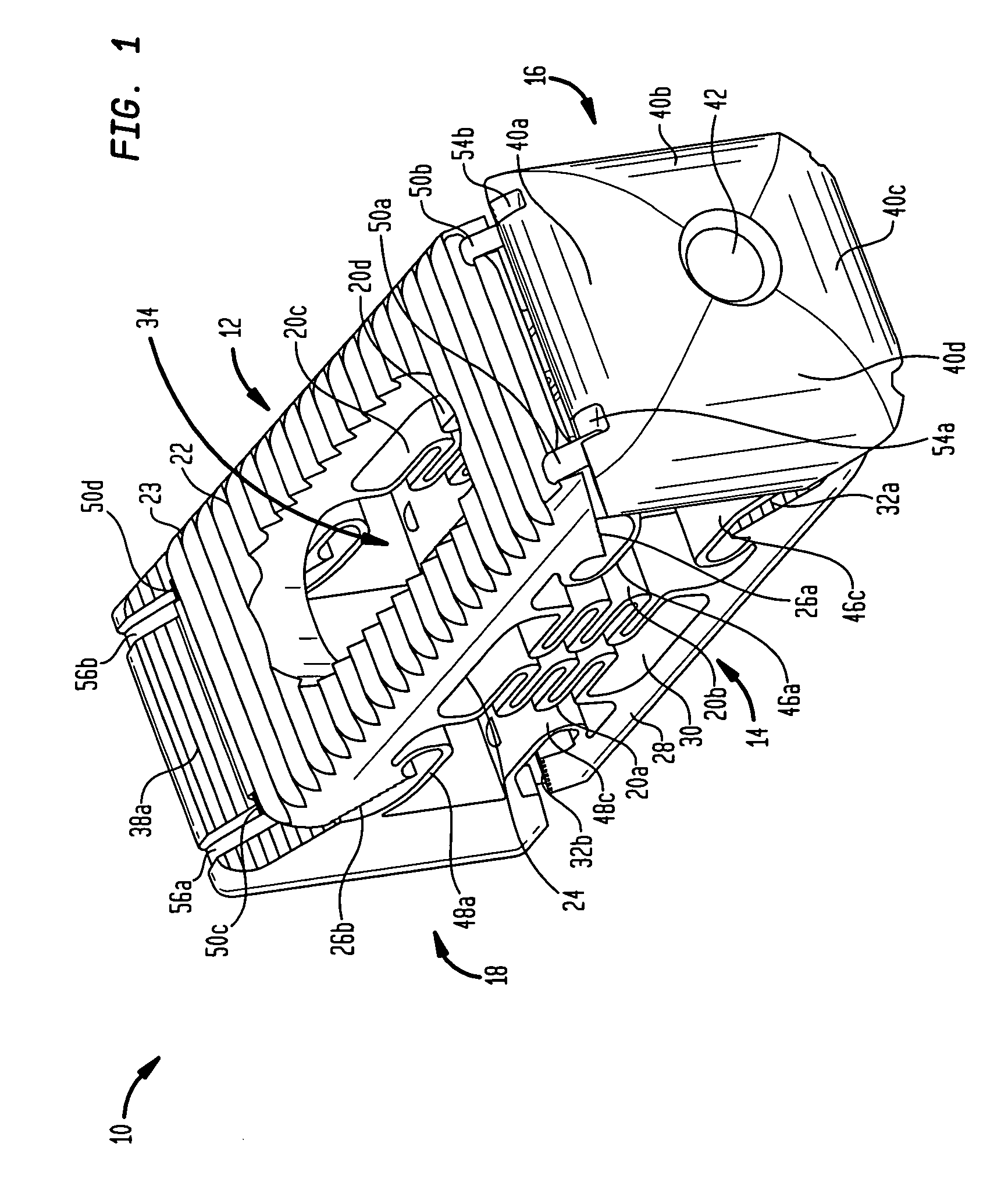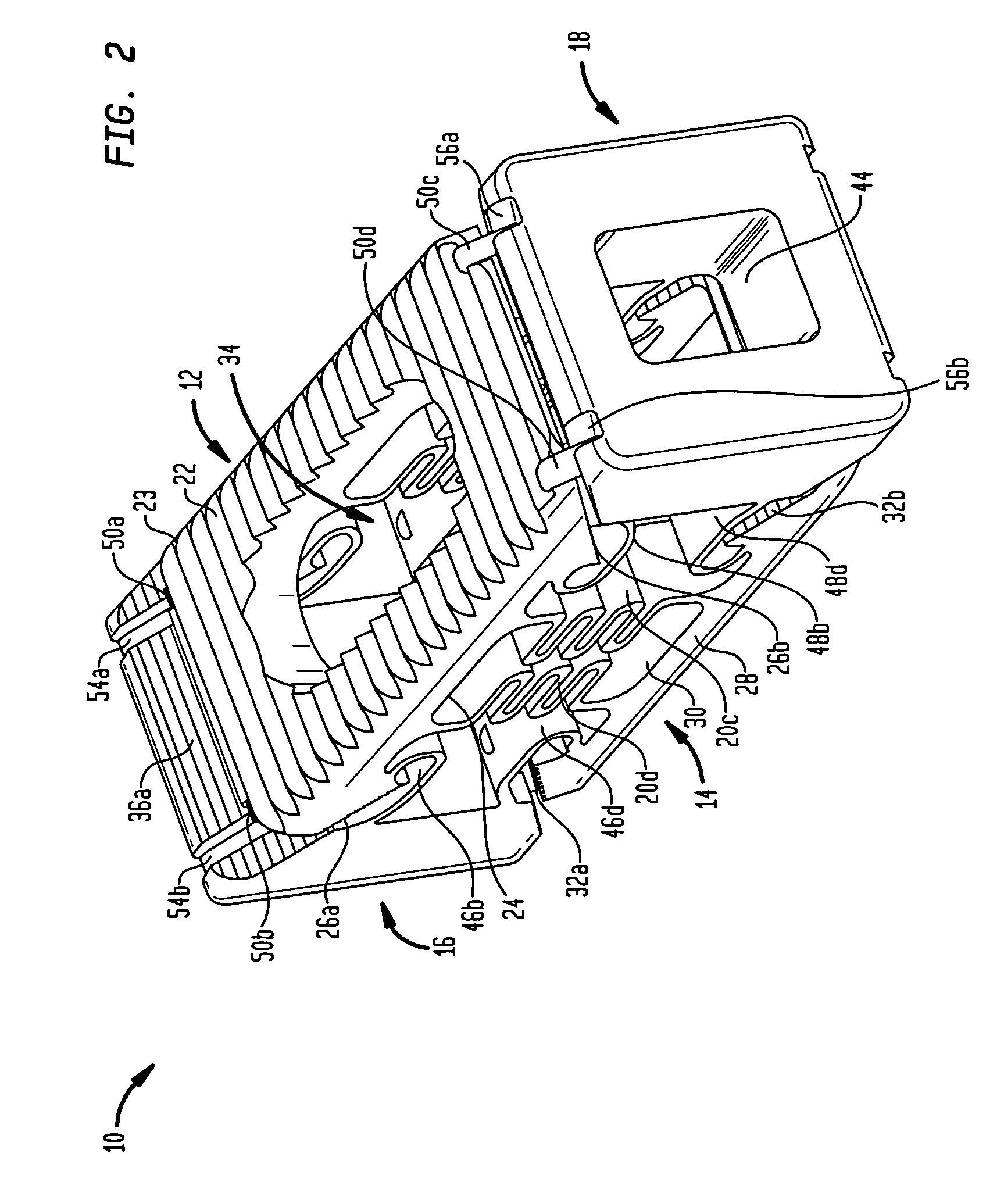Tool for implanting expandable intervertebral implant
a technology of intervertebral implants and tools, which is applied in the field of tools for implanting expandable intervertebral implants, can solve the problems of disc space, so drastic decrease in spacing, and myriad of problems for patients
- Summary
- Abstract
- Description
- Claims
- Application Information
AI Technical Summary
Benefits of technology
Problems solved by technology
Method used
Image
Examples
first embodiment
[0036]Referring to the drawings, wherein like reference numerals refer to like elements, FIGS. 1-6 depict a first embodiment expandable intervertebral implant, designated generally by reference numeral 10. As is shown in the drawings, implant 10 includes, among other elements that will be discussed below, a first member 12, a second member 14, a first wedge 16, a second wedge 18, and a plurality of struts 20a-d. Implant 10 is designed so that is capable of expanding from a generally unexpanded state (shown in FIGS. 1-5) to a fully expanded state (shown in FIG. 6), as well as several different partial expended states therebetween. The specific details of the structure and the operation of implant 10 will be discussed further below.
[0037]As is shown in FIGS. 1-6, first and second members 12 and 14 are generally planar plate-like elements capable of contacting and supporting a portion of vertebral bodies implant 10 is inserted between. First member 12 includes a first vertebral body co...
second embodiment
[0053]FIGS. 7-9 depict a second embodiment implant 110. Essentially, implant 110 is substantially similar to implant 10 save for the inclusion of different torsion inhibiting elements. Because of the similarity of implant 110 with implant 10, similar or identical elements will be referred to with like reference numerals within the 100-series of numbers. For example, implant 110 includes first and second members 112 and 114 which are expandable upon movement of first and second wedges 114 and 116 towards one another. However, in the embodiment shown in FIGS. 7-9, first and second members 112 and 114 are provided with apertures (150a-d and 152a-d, respectively) which are capable of receiving protuberances (not shown). For example, these apertures may receive pins, screws, or plugs which extend somewhat below the angled interior surfaces of first and second members 112 and 114, respectively. First and second wedges 116 and 118, on the other hand, each include four channels for cooperat...
PUM
 Login to View More
Login to View More Abstract
Description
Claims
Application Information
 Login to View More
Login to View More - R&D
- Intellectual Property
- Life Sciences
- Materials
- Tech Scout
- Unparalleled Data Quality
- Higher Quality Content
- 60% Fewer Hallucinations
Browse by: Latest US Patents, China's latest patents, Technical Efficacy Thesaurus, Application Domain, Technology Topic, Popular Technical Reports.
© 2025 PatSnap. All rights reserved.Legal|Privacy policy|Modern Slavery Act Transparency Statement|Sitemap|About US| Contact US: help@patsnap.com



